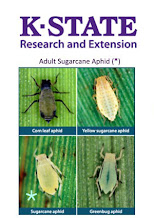Helping Young Children’s Development Through Reading
By Nora Rhoades, Family and Youth Development Agent
Adults expend a lot of energy feeding, clothing, sheltering, and completing other basic duties when caring for a child. It becomes easy to forget that children are also developing their own minds.
Rather than just thinking of a child as an individual with needs, treat them as an individual with a mind. Children are constantly learning about the world, and as adults in their lives perform fundamental tasks, children’s minds are seeking to understand what everyone already knows!
 Reading is a process that assists children as they learn to communicate and make sense of what they experience. It also provides great fun for both the adult and the child. The most important aspect of the reading process is to remember to read with your child, as opposed to reading to your child. Reading with your child is a collaborative process that engages you and your child in navigating the book’s story, characters, and your own ideas about what is happening.
Reading is a process that assists children as they learn to communicate and make sense of what they experience. It also provides great fun for both the adult and the child. The most important aspect of the reading process is to remember to read with your child, as opposed to reading to your child. Reading with your child is a collaborative process that engages you and your child in navigating the book’s story, characters, and your own ideas about what is happening.There are a variety of approaches that can be utilized when reading and learning with your child. Each has a place in the adult-child interaction, but relying on any single approach will not lead to positive results. When these approaches are diversely incorporated into a child’s learning experiences they have proven effective in building cognitive and social-emotional skills.
Mindfulness — Mindfulness is a way of thinking about things not as they are, but as they could be. It recognizes the potential for many different outcomes. Mindfulness is an active and intentional way of being in the moment with your child by following their imagination to extend thinking and learning.
Questioning — Assessment questions are a beginning step in an adult-child interaction because they are used to help determine where a child is in his or her thinking. For example, “Do you know what color that it?” Many times these questions can be answered with a single word response like “yes”, “no”, or “blue”. These questions help you determine where to go next with learning.
Assistance questions are used to get the child thinking about what they are experiencing and often what others are thinking. These are open-ended and usually require an explanation with the reply. These questions are the who, what, why, and how. An example is, “What do you think is going to happen next in the story?”
Explaining and Instructing — Sometimes children need just a single piece of information to make a leap into full understanding. Other times, they just want to know some more information. It is important to follow the child’s lead in order to determine when and where to incorporate explanation because you don’t want to get in a habit of answering before you examine the teachable moment.

Modeling — Teens and adults are always modeling human behavior and interaction for children. Learning through observation is one of the primary learning strategies for children. They watch how people interact, how to behave in different situations, and how to treat others. Another type of modeling is imitating what you see. By physically acting out what is read, children can learn about their bodies and voices.
Feedback — Commenting on a child’s performance can be an effective means of assistance, but it must be relative to a standard. Saying “good job” is not beneficial feedback because it doesn’t help a child determine the importance of what they are doing. “You did a good job, because...” helps children understand the why behind thoughts and actions.
Maintaining Focus — Sometimes it is hard to maintain a child’s focus. Children have to learn skills to maintain their focus and follow the story of a book. Rather than using authority to manage distractions, try to offer choices such as finishing a page and then doing something else, stopping now, or skipping ahead. You can also regain focus by asking the child to tell the story or discussing the pictures.
Source: Emergent Literacy: Helping Young Children's Development Through Reading; A publication made available by K-State Research and Extension; Available at: http://www.ksre.ksu.edu/bookstore/pubs/MF3161.pdf







